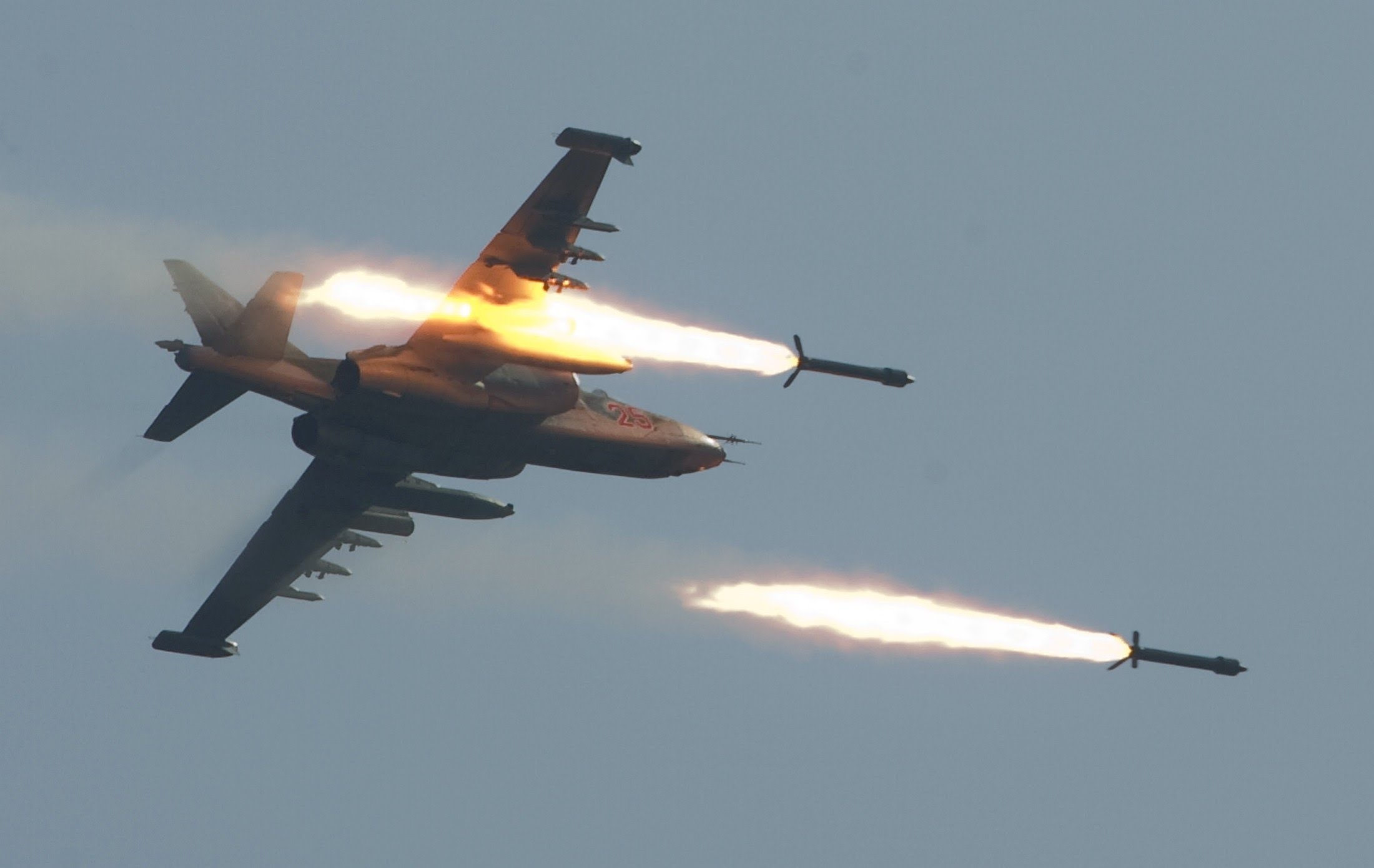The expeditionary detachment of the Russian Air Force in Syria can conduct a maximum of 20-24 sorties per day under normal conditions, and 48-96 sorties per day during a “combat surge”. This is the estimate of retired U.S. Air Force and U.S. Navy fighter pilots who have been following the Russian campaign in Syria.
According to the U.S. pilots, the Russians have 32 aircraft at Latakia’s air base: 12 Su-30SM multiple role fighter jets usually used for Combat Air Patrol missions, 12 Su-24M2 bombers, 12 Su-25SM close air support bombers and 4 Su-34 substrategic bombers. With these 32 aircraft, they can probably conduct 24 sorties a day, under realistic conditions. This means that the Russians have eight to ten aircraft available for air strike missions per day from a fleet of 28 bombers, while the four Su-30SM conduct sporadic Air Combat Patrol missions.
In the case of a “combat surge” scenario they can conduct 48-96 sorties a day, making use of 24 jets per day, each one of them flying between two and four sorties per jet per day. However, this pace cannot be sustained for a long period of time.
As the U.S pilots explain, the Russian Air Force has several flaws that do not allow them to maintain a high pace during their sorties. First of all, the Russian Air Force detachment in Syria is the first to be deployed abroad since the establishment of the Russian Federation in 1992. The last time the Russians deployed aircraft abroad was in the Soviet era, during the War in Afghanistan (1979-1989). Therefore their lack of experience in supporting a considerable detachment abroad is thought to be affecting their performance.
Additionally, the Russians have a relatively weak logistical train and there are a lot of variables that could affact the pace of the operation, such as the number of aircrews and maintainers, the distance from the airfield to the targets and the amount of intelligence gathered on deliberate targets.
Furthermore most of the Russian aircraft in Syria are using conventional bombs such as FAB-500, FAB-250, OFAB-250/270 High Explosive Fragmentation bombs and BETAB-500Shp concrete piercing bombs. This means that most of the Russian bombers have to fly during the day, so they do not miss their targets and cause collateral damage. As a result this reduces the number of possible sorties per day.
According to the U.S. pilots, only a small number of Russian aircraft are using smart munitions (such as Kh-29L laser-guided missiles, KAB-250 High Explosive Fragmentation Demolition bombs, Kh-25ML laser-guided missiles and KAB-500S precision satellite-guided munitions, which are known to be used in Syria).
The problems mentioned above would appear to limit the capabilities of the Russian Air Force detachment in Syria. However, it does not seem to affect the willingness of Moscow to destroy the enemies of Assad even. the Russian Ministry of Defence announced recently that they would continue their presence in the country for up to four months.
Image Sourced: Wikipedia


